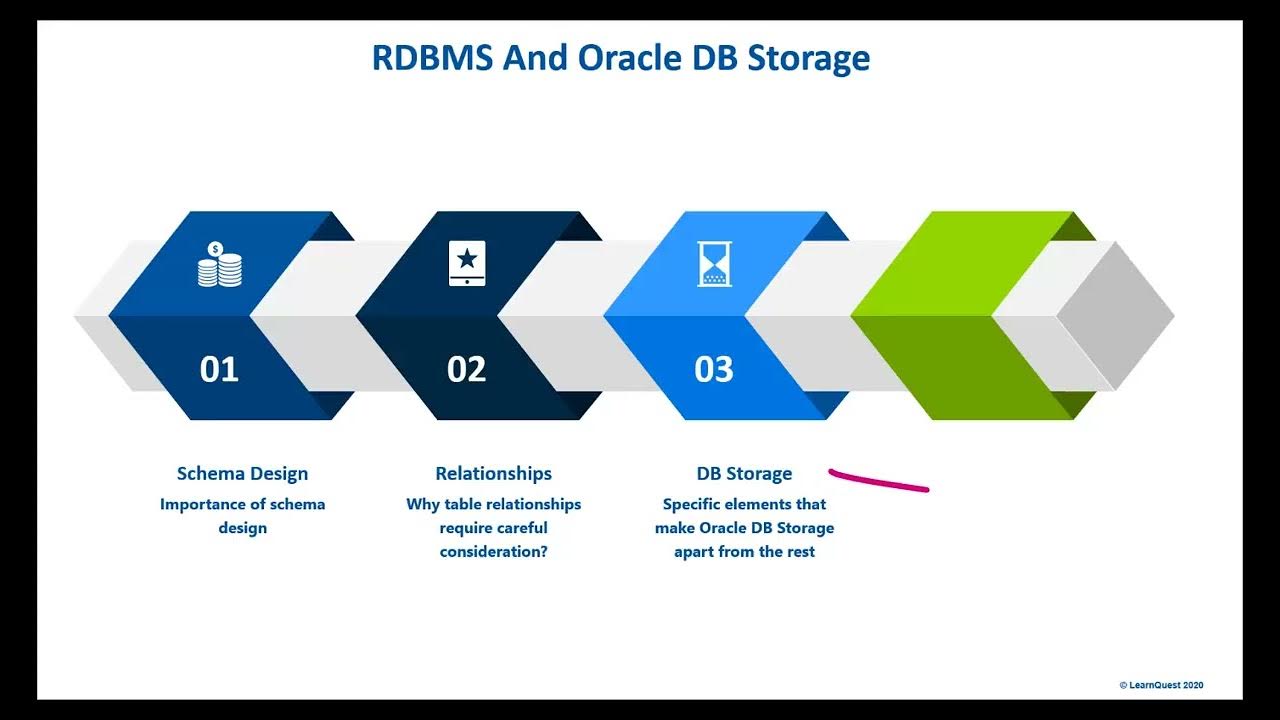12 April 2025
Summary
TLDRThis module provides an overview of business intelligence (BI), focusing on its components and the importance of relational database management systems (RDBMS). It covers the data hierarchy, from bits to databases, explaining how data is organized for efficient access. The script highlights the role of databases, files, records, and attributes in supporting business decision-making. Additionally, it emphasizes the capabilities of RDBMSs, including data integrity, querying with SQL, security features, and scalability, which are essential for effective BI and data management in business environments.
Takeaways
- 😀 Business Intelligence (BI) refers to the process of collecting, analyzing, and presenting data to support decision-making in business.
- 😀 BI helps businesses gain insights into their operations and make more informed decisions.
- 😀 The data hierarchy organizes data into different levels from the smallest unit to the largest, including bits, bytes, fields, records, files, and databases.
- 😀 A bit is the smallest unit of data, represented by a zero or one, while a byte is made up of eight bits.
- 😀 A field is a collection of related bytes, and a record is a collection of related fields.
- 😀 A file is a collection of related records, and a database is a collection of related files.
- 😀 Databases are organized to enable efficient storage, retrieval, and manipulation of data, often containing files, records, and attributes.
- 😀 Traditional file environments often face issues like data inconsistency, limited flexibility for reporting, poor security, and difficulties in data sharing.
- 😀 Relational Database Management Systems (RDBMS) store and retrieve data based on relationships between data entities using SQL.
- 😀 RDBMSs offer several capabilities, including data integrity, querying, security, and scalability.
- 😀 RDBMSs enforce rules like primary key uniqueness and referential integrity through foreign keys to ensure data consistency.
Q & A
What is business intelligence (BI)?
-Business intelligence (BI) refers to the process of collecting, analyzing, and presenting data to support decision-making in business. It enables businesses to gain insights into their operations and make more informed decisions.
What are the components of business intelligence covered in this module?
-This module covers the components of business intelligence, including the data hierarchy, databases, files, records, attributes, and relational database management systems (RDBMS).
What is the data hierarchy in business intelligence?
-The data hierarchy refers to the organization of data into different levels, ranging from the smallest unit of data (a bit) to the largest (a database). The levels include bit, byte, field, record, file, and database.
What is the smallest unit of data in the data hierarchy?
-The smallest unit of data in the data hierarchy is a bit, which is represented by a 0 or 1.
What is the role of a field in the data hierarchy?
-A field is a collection of related bytes in the data hierarchy. It represents a specific piece of data, such as a name, address, or other attribute.
How do records and files fit into the data hierarchy?
-In the data hierarchy, a record is a collection of related fields, and a file is a collection of related records. For example, a customer file may contain customer records, with each record holding attributes such as name and address.
What is a database in the data hierarchy?
-A database is the largest unit in the data hierarchy and is a collection of related files. It organizes and stores data in a way that enables efficient retrieval and manipulation.
What are some common problems with traditional file environments?
-Traditional file environments often face problems such as data inconsistency, lack of flexibility in creating reports, poor security, and challenges in data sharing.
What are relational database management systems (RDBMS)?
-Relational database management systems (RDBMS) are database management systems that store and retrieve data based on relationships between data entities. They use Structured Query Language (SQL) to manage the data.
What capabilities do RDBMS offer for business intelligence?
-RDBMS offer several capabilities that enhance business intelligence, including data integrity, querying with SQL, security features such as user authentication, and scalability to handle large amounts of data.
Outlines

Этот раздел доступен только подписчикам платных тарифов. Пожалуйста, перейдите на платный тариф для доступа.
Перейти на платный тарифMindmap

Этот раздел доступен только подписчикам платных тарифов. Пожалуйста, перейдите на платный тариф для доступа.
Перейти на платный тарифKeywords

Этот раздел доступен только подписчикам платных тарифов. Пожалуйста, перейдите на платный тариф для доступа.
Перейти на платный тарифHighlights

Этот раздел доступен только подписчикам платных тарифов. Пожалуйста, перейдите на платный тариф для доступа.
Перейти на платный тарифTranscripts

Этот раздел доступен только подписчикам платных тарифов. Пожалуйста, перейдите на платный тариф для доступа.
Перейти на платный тариф5.0 / 5 (0 votes)






